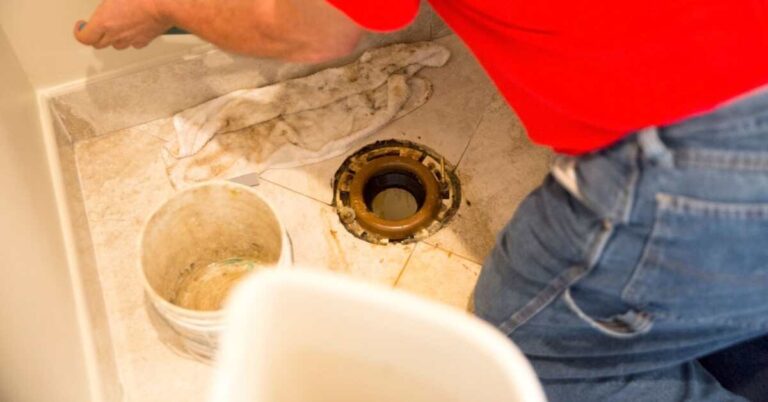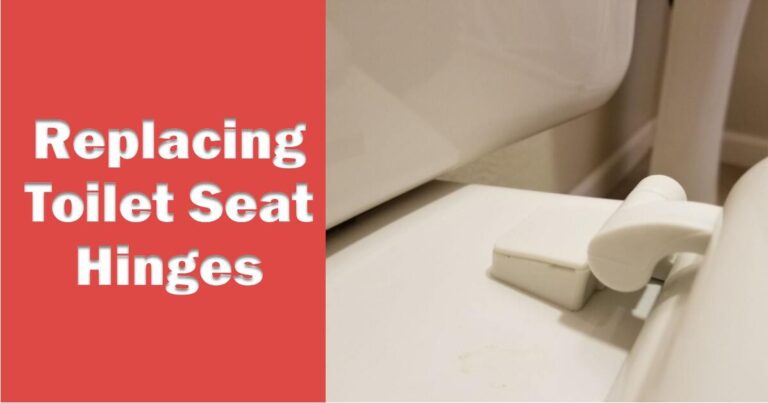The sound of a toilet endlessly running and cycling on and off can drive homeowners crazy. This constant phantom flushing is usually caused by a simple malfunction that allows water to leak from the tank into the bowl, triggering a refill cycle that repeats over and over. The good news is that most toilet running issues are easy to diagnose and fix.
This article will explain the most common causes of toilets getting stuck in a flushing and refilling loop. We’ll cover basic troubleshooting steps to pinpoint the problem, focusing on the critical flapper mechanism. You’ll learn how to adjust flapper chains, inspect and clean the flapper and valve seat, and replace a worn-out flapper if needed. We’ll also discuss adjusting the tank water level by modifying the fill valve’s float. With simple DIY repairs, you can stop your toilet’s endless cycling and finally fix that constantly running and leaking commode.
- Stop That Toilet From Constantly Running With This Handy DIY Repair Guide
- Prevent Problems with Regular Maintenance
- When to Call in a Pro for Your Running Toilet
- Don’t Get Caught With Your Pants Down! Prevent Toilet Cycling For Good
- Got Toilet Troubles? Find Answers to Common Questions Here
- Parting Thoughts on Fixing the Phantom Flusher
Stop That Toilet From Constantly Running With This Handy DIY Repair Guide
Dealing with a toilet that flushes and refills endlessly can frustrate you. But don’t worry – with simple tools and easy troubleshooting; you can stop the phantom flushing and finally fix that leaky, cycling commode yourself.
Gather Your Toilet Repair Toolkit
Before tackling a running toilet, assemble a handy toolkit:
- Adjustable wrench
- Replacement flapper
- Float adjustment clip
- Rags
- Bucket
- Flashlight
Equipped with these supplies, you can quickly fix the most common toilet troubles.
Shut Off the Water Supply and Assess the Tank
Start by:
- Turning off the water supply valve behind the toilet
- Flush to empty tank
- Sponge out all water.
- Inspect the inside of the tank with a flashlight.
With the tank empty, you can now closely check the various components to identify anything that looks amiss.
Adjust the Flapper Chain
The flapper chain is a common culprit in phantom flushing, so check that:
- The chain has about 1/2 inch of slack when the flapper is sealed.
- The chain was not tangled, caught under the flapper.
- The chain length is not holding the flapper open.
A quick chain adjustment can often stop the cycling.
Focus on the Flapper
The flapper acts as a seal at the bottom of the tank – leaks here cause constant refilling.
To troubleshoot, remove the flapper and:
- Inspect condition – cracked, warped?
- Clean sealing surface with rag
- Examine rubber seal for wear, hardness
- Replace the flapper if worn out.
A $10 flapper replacement can fix many running toilet issues. Bring the old flappers to the hardware store to find an exact or universal replacement.
Scrub and Check the Flapper Seat
While the flapper is off, use a rag to:
- Clean valve seat where flapper seals
- Remove any mineral deposits.
Buildup here can prevent the flapper from sealing watertight. A good scrubbing can allow the flapper to seat properly again.
Test for Leaks
Before replacing the flapper, first:
- Reinstall old or new flapper
- Mark the water line inside the tank
- Turn on the water and let it fill
- Turn off the supply and wait 15 minutes
If the water level drops, the flapper is still leaking. Confirm with the new flapper before moving on.
Modify Tank Water Level
The toilet keeps running if the tank level is too high or low.
To set the right level:
- Mark the correct water line on the overflow tube
- Bend the float rod or turn the screw to adjust the float until the fill line matches the mark
This ensures the correct amount of water fills the tank.
Check the Refill Tube
The refill tube flows water into the bowl after flush. If tube:
- Falls into a bowl
- It is misaligned with overflow.
…it won’t fill the tank/bowl properly.
Reattach the tube 1 inch above the overflow tube rim for optimal refill.
When to Replace the Fill Valve
The fill valve may be faulty if the water level adjustment doesn’t resolve the issue.
Consider replacing the fill valve if:
- Mineral buildup clogs the valve.
- The float doesn’t adjust properly.
- Valve seals leak and cause overfill.
Fill valve kits cost $15-20 and install easily.
Try Swapping the Flush Valve
As a last resort, replace the entire flush valve, including:
- Flush valve seal
- Overflow tube
- Flapper
A $30-40 kit can solve leaks even a new flapper doesn’t fix. Match the kit to your toilet model.
Prevent Problems with Regular Maintenance
You can avoid many toilet troubles by:
- Monthly flapper inspections
- Annual float adjustment
- Checking fill and refill tubes
- Replacing flapper every 3-5 years
A well-maintained toilet will work well for years to come!
You can permanently banish the phantom flusher from your bathroom with some DIY determination. Follow these steps to smoothly and seamlessly stop that problematic perpetual potty procession.
When to Call in a Pro for Your Running Toilet
While the repairs covered in this guide are straightforward for DIYers, there are a few cases where it pays to call in a professional plumber:
Specialized Expertise
For tricky diagnoses or complex toilet guts, a plumber has the expertise to identify issues and make nuanced repairs the average homeowner may miss. Their depth of knowledge can solve elaborate problems.
Proper Tools
Plumbers have professional-grade equipment, like high-powered augers, to clear clogged passages or camera snakes to peer inside pipes. This heavy-duty gear helps remedy problems regular homeowners can’t address.
Hidden Causes
In some cases, the source of the running toilet lies hidden in plumbing on floors or walls. Plumbers have the skills to track down elusive external leaks methodically.
Warranties
Many plumbers offer repair warranties, providing peace of mind if the fix doesn’t hold. DIY repairs don’t usually come with such guarantees.
While basic running toilet repairs are doable yourself, sometimes it’s worth paying for the expertise of a professional plumber to solve the problem once and for all.
Don’t Get Caught With Your Pants Down! Prevent Toilet Cycling For Good
You’ve finally stopped that dreadful phantom flushing and random refilling. But how can you ensure your toilet doesn’t start endlessly running and cycling again? A bit of preventive care keeps the porcelains running pristinely for years.
Schedule Regular Checkups
Don’t let constant leaks catch you by surprise again! Mark your calendar to:
- Inspect the flapper every 3-6 months for cracks or hardness
- Check chain slack and float adjustment yearly.
- Clean valve seats when replacing the flapper
- Verify the refill tube position when the tank is empty.
Routine checks ensure parts function optimally before problems arise.
Scale Back Mineral Buildup
Mineral deposits from hard water can prevent proper seals and cause phantom flushing.
Reduce scale by:
- Using the water softening system/filtration
- Cleaning tank with white vinegar
- Swapping in new fill valve every 5-7 years
Keep valves and seals sediment-free for leak-free operation.
Monitor Water Level
Check that water reaches the correct level after flushes. If tank:
- Overfills, float needs adjusting
- If it doesn’t fill enough, the refill tube may be blocked.
Watch the bowl refill to make sure all is working well.
Lend An Ear
Listen for sounds of potential trouble:
- Running water means a flapper leak.
- Weak flush indicating low water volume
- Odd gurgling signalling clogged tubes.
Early noise clues help resolve small problems before they escalate.
Don’t Wait – Replace!
Whether parts look fine or not, replace key components every few years:
- Flappers every 3-5 years
- Float valve every 5-7 years
- Refill the tube when replacing flapper.
Swap in new parts pre-emptively to avoid being caught pantless when an old piece unpredictably fails.
With some preventive TLC for your toilet, you can flush away worries of cycling or leaks coming back to bite you. Stay proactive, and you can confidently keep that bowl from overflowing with problems for years!
Got Toilet Troubles? Find Answers to Common Questions Here
Dealing with toilet dilemmas? We’ll tackle frequently asked questions about those pesky phantom flushers that keep cycling and leaking.
If your toilet spontaneously runs and refills, the usual culprit is a leaky flapper. As the water slowly dribbles from tank to bowl, the fill valve activates to refill, starting the cycle anew. Checking the flapper seal and replacing if worn can banish this annoying issue.
A toilet that continues running non-stop after flush has problems with the fill valve shutting off. The float may be set too high, damaged, or blocked by debris. Adjusting the float or replacing the valve restores proper function.
To set the right water level in tank, bend the float rod down to lower water level or up to raise it. Turning the adjustment screw on ball-type floats has a similar effect. Match the new level to a line marked on the overflow tube for optimal fill.
Replacement is needed if the flapper is visibly cracked, misshapen, or doesn’t fully seal. Soft or sticky rubber, difficult to open or close, and water leaks indicate a worn-out flapper. Replace every 3-5 years as preventive maintenance.
The refill tube is likely disconnected from the overflow pipe if the bowl drains completely after the flush. This prevents water from flowing from the tank to the bowl. Reattaching the tube about 1 inch above the overflow rim will resolve this issue.
Still stumped about your troubled throne? Review our steps for diagnosing and fixing constantly running toilets. And remember – prevention is the best medicine to avoid recurring commode calamities!
Parting Thoughts on Fixing the Phantom Flusher
Dealing with a toilet that won’t stop running can be a royal pain, but a little DIY troubleshooting can help flush those problems away. As we’ve explored, adjusting the flapper chain, replacing the flapper, cleaning the valve seat, and modifying the float are the key steps to stopping the perpetual cycling and leaking. You can banish that phantom flushing from your bathroom with a simple repair.
Beyond the peace of mind, fixing toilet troubles saves countless gallons of water and money wasted with every refill. So take action when your commode starts cycling – your wallet and the environment will thank you!


